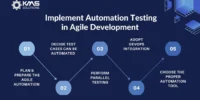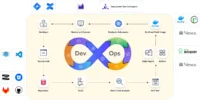Agile project management has become a cornerstone in the world of project development and execution. The Agile methodology emphasizes adaptability, collaboration, and incremental progress, making it a popular choice for teams across various industries. In this article, we’ll explore quick tips for implementing Agile project management to ensure smooth workflows and successful project outcomes.
1. Embrace Iterative and Incremental Development
Agile revolves around iterative and incremental development. Break down your project into small, manageable tasks and deliver them in short cycles known as sprints. This approach allows teams to gather feedback, adapt to changes, and continuously improve the project as it evolves. Embracing iteration enables a more flexible and responsive project development process.
2. Foster Collaboration and Communication
Effective communication and collaboration are at the heart of Agile project management. Encourage open communication channels among team members, stakeholders, and customers. Regularly hold collaborative meetings, such as sprint planning sessions and daily stand-ups, to keep everyone informed and aligned on project goals. This transparent communication fosters a sense of ownership and collective responsibility.
3. Prioritize and Adapt with a Product Backlog
Create a product backlog to prioritize tasks and features. The backlog serves as a dynamic to-do list, allowing the team to adapt and reprioritize based on changing requirements or feedback. Prioritization ensures that the team focuses on delivering the most valuable features first, maximizing the project’s impact and meeting stakeholder needs efficiently.
4. Empower Teams with Cross-Functional Skills
Agile teams benefit from having members with cross-functional skills. Encourage team members to develop a diverse skill set, allowing them to contribute to different aspects of the project. Cross-functional teams enhance flexibility and efficiency, as individuals can collaborate seamlessly and take on a variety of tasks during the development process.
5. Implement Continuous Integration and Continuous Delivery (CI/CD)
Automate the integration and delivery of code through continuous integration and continuous delivery pipelines. CI/CD ensures that changes are tested and delivered consistently, reducing the risk of errors and speeding up the development process. Automation enhances reliability and allows teams to focus on adding value to the project.
6. Emphasize Customer Feedback and Involvement
Customer satisfaction is a core principle of Agile. Involve customers early and often in the development process, seeking their feedback on increments and prototypes. This customer-centric approach ensures that the project aligns with their expectations and provides value. Regular feedback loops also allow for quick adjustments based on changing requirements.
7. Conduct Regular Retrospectives for Continuous Improvement
Hold regular retrospectives at the end of each sprint to reflect on the team’s performance. Identify what went well, what could be improved, and actionable steps for enhancement. Continuous improvement is a fundamental aspect of Agile, and retrospectives provide a structured platform for teams to adapt and refine their processes.
8. Embrace Change and Adaptability
Agile is founded on the principle of embracing change. Be adaptable and responsive to evolving requirements, feedback, and market conditions. Cultivate a mindset that sees change as an opportunity for improvement rather than an obstacle. This flexibility enables teams to deliver high-quality results in dynamic and fast-paced environments.
Conclusion
Agile project management is a powerful methodology that empowers teams to navigate complex projects with agility and efficiency. By embracing iterative development, fostering collaboration and communication, prioritizing with a product backlog, empowering cross-functional teams, implementing CI/CD, emphasizing customer feedback, conducting regular retrospectives, and embracing adaptability, your team can unlock the full potential of Agile methodologies. Keep these tips in mind, and watch your projects thrive in the ever-changing landscape of project management.








